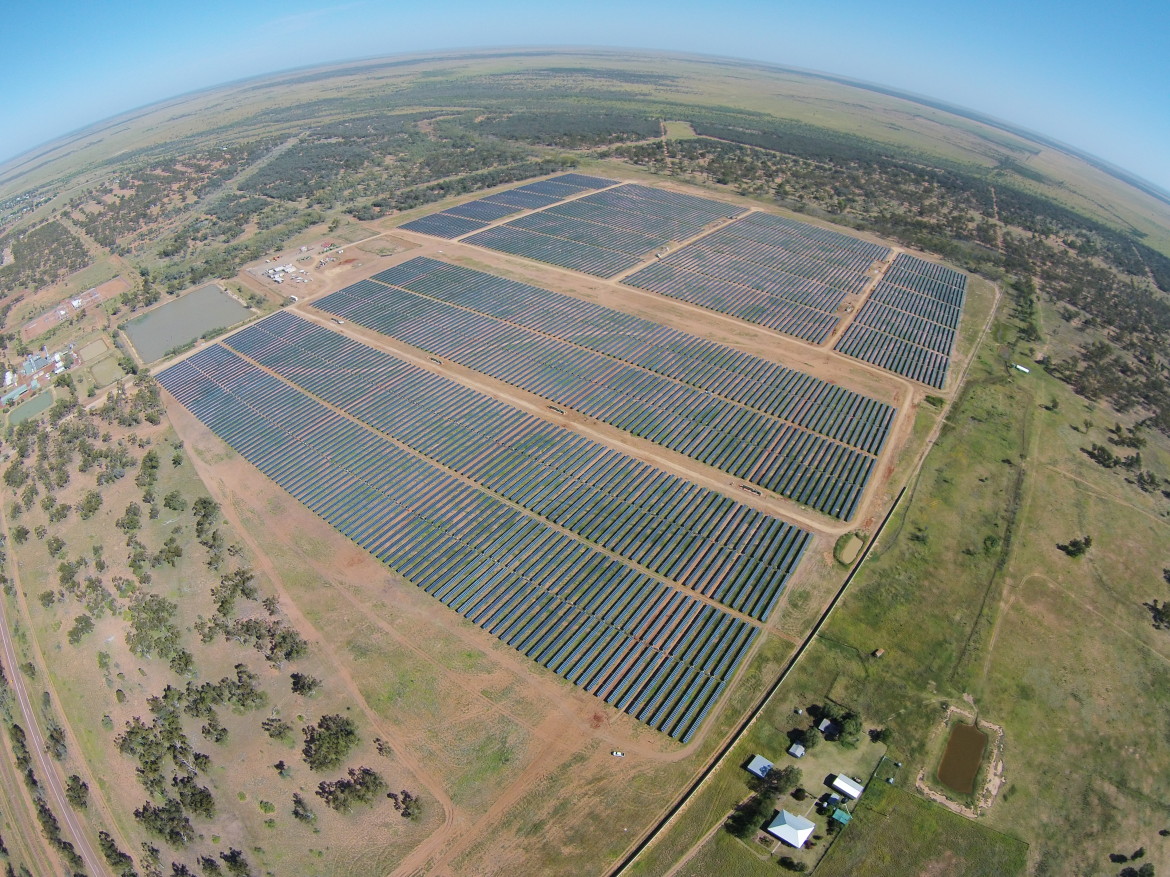The Queensland Government is helping to fund a new renewable energy hub in the state’s central-west Barcaldine region as it looks to back its renewable resources deemed critical to a post-Covid-19 economic recovery.
The Palaszczuk Government is investing $300,000 toward the investment of what will become the Barcaldine Renewable Energy Hub (the Hub). Now admittedly, this is not a large sum of money, but it is a statement of support for a project whose renewable foundations already provide it with clear financial advantages.
According to the Remote Area Planning and Development Board (RAPAD), the funds will be put towards a feasibility study. One would think the study a relative formality considering the region’s solar pedigree, such as the Barcaldine Solar Farm. Indeed the study may be such a formality that nobody seems to mind the potential conflict of interest in Sunshot Energy’s Executive Chairman, renowned scientist and renewable energy advocate Professor Ross Garnaut AC, carrying out the study. Garnaut himself doesn’t seem to mind, calling the region “the best solar country in eastern Australia and just about as good as any in the world.”
The Hub itself is set to entail a large-scale solar farm, a 50MW battery and a biosteam turbine generator. QLD Treasurer and Minister for Infrastructure and Planning, Cameron Dick, believes the Sunshot Energy project has the potential to turbo-charge economic growth in the region. Indeed Shotshot estimates that the Hub could create 200 local jobs and attract up to $500 million of new investment to the central-west region.
“It would also help put further downward pressure on power prices,” said Dick, “while strengthening our state’s push towards a cleaner energy future. We’re eager to continue harnessing Queensland’s natural advantages by investing in more large-scale renewable energy projects.”
Energy Minister Anthony Lynham positioned the project in the larger context of QLD’s renewable energy revolution, including $6.6 billion already invested or committed to large scale renewable projects.
“Renewable energy projects have brought thousands of construction jobs to regional Queensland,” said Lynham. “Our new publicly-owned generator CleanCo will also continue to drive renewables with its remit to bring on another 1000 megawatts of renewable generation over the next five years.”
Local government is also getting in on the act, with Barcaldine Regional Council committing $100,000 to the proposed Hub. Mayor Sean Dillon spoke of his region’s ambitions for renewable energy and status as a central-northern transport hub which it wants to bring about through the attractiveness of green power to business, investment, and employers.
Back at the state level, Cameron Dick said that maximising Queensland’s unique resources mix was critical to the state’s post-Covid-19 recovery. “Queensland is blessed with a blend of natural resources unlike anywhere in the world,” noted Dick, “the time is right to take advantage of this to drive a new era of investment and growth.”
The key word here from Dick appears to be “mix”, as today’s announcement comes in tandem with leaked invoices obtained by The Sydney Morning Herald and The Age revealed that Queensland’s hugely controversial Adani coal mine has finally found international insurers that have agreed to cover it after a whole host of local insurers and financiers fled the politically contentious project.
However, even these insurers have climate policies restricting the underwriting of new thermal coal projects, causing many to wonder how Adani is being covered at all. Sunrise Project campaigner Ed Hill told SMH that insurance firms are exploiting loopholes in their climate policies in order to maintain their poor habitual behaviour. “You’re inviting reputational damage upon yourself getting involved in this project,” Hill warned.
Clearly, coal is still a powerful force in Queensland and indeed Australia, but as the QLD Government is itself admitting, the long-term jobs are in renewables.
RAPAD Chair Tony Rayner made the point that a region cannot depend on disparate influxes of construction workers for large projects as the local economy will not see the full benefit. But with green power “we can attract new industries,” said Rayner, “in areas like manufacturing, waste management, primary production or processing that will have access to cheap and clean power, that will make a real difference in terms of jobs, the economy, sustainability and liveability of the local region.”
This content is protected by copyright and may not be reused. If you want to cooperate with us and would like to reuse some of our content, please contact: editors@pv-magazine.com.









is a solar farm being built north of barcaldine in 2021